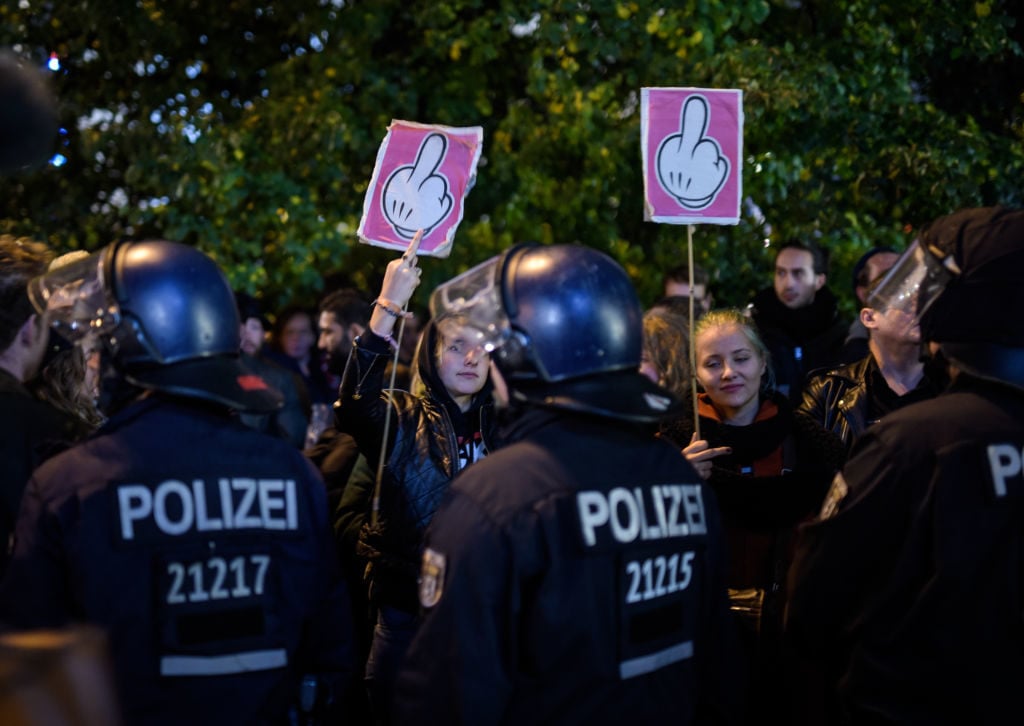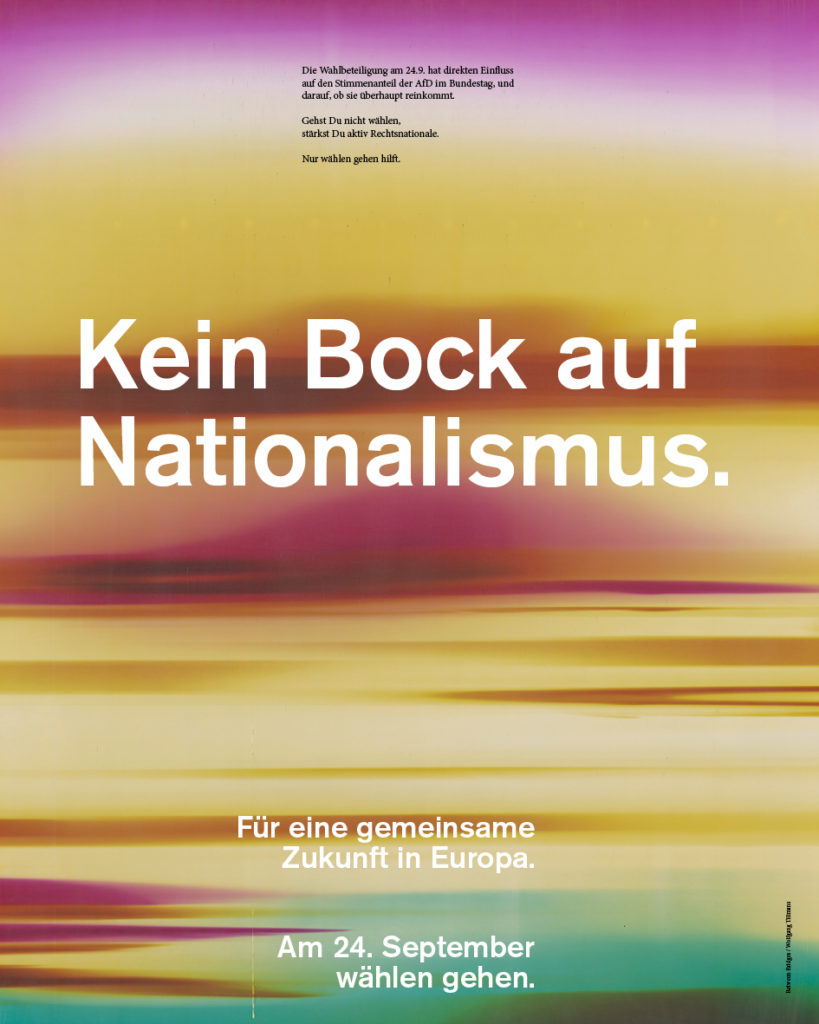Politics
‘The Rise of the AfD Is a Terrible Nightmare’: The Art World Reacts to Germany’s Alarming Election Results
A far-right populist party enters the German parliament for the first time in more than 60 years.

A far-right populist party enters the German parliament for the first time in more than 60 years.

Hili Perlson

Members of the German art world were among those left reeling from the results of the country’s election over the weekend.
The election marks two firsts in Germany’s postwar history. Angela Merkel, the leader of the center-right Christian Democrats, secured a fourth term as chancellor. Her victory, however, was overshadowed by the entry of the far-right party Alternative für Deutschland (AfD) into parliament, the first time in over 60 years that an extreme nationalist party gained enough votes to secure seats in the federal parliament.
As votes were still being counted on Sunday afternoon, spontaneous anti-AfD protests erupted across the country. In Berlin, hundreds gathered at Alexanderplatz and protested in front of the GDR-era high-rise where the AfD was holding its election party. artnet News spotted many members of Berlin’s young art scene at the peaceful demonstration, as well as more established figures like Hito Steyerl and Michaela Meise.
“The whole of Berlin hates the AfD,” protesters chanted in German, along with the slogan, “Say it loud, say it clear, refugees are welcome here” in English.
All mainstream parties lost voters to the AfD, which ran on an anti-immigration campaign. It is now the third largest party in parliament with an over 13 percent vote and 94 out of 709 seats. (CDU, Markel’s party, secured 246 seats, while the SPD will be represented with 153, the worst result since World War II for the Social Democrats.)
Artists were quick to voice their concern. “I expected this and that’s why I did what I could to mobilize apolitical but open-minded people to vote,” the photographer Wolfgang Tillmans told artnet News via email, referring to the posters he designed to get out the vote. He noted that turnout was 76.5 percent—five percent higher than last time—but one million of the new voters placed their ballots for the AfD.
Tillmans continued:
What’s special and to me personally sickening is that some of their politicians keep claiming that Germany should get over it’s ‘guilt trip’ regarding the Holocaust. The small percentage of neo- or old-Nazis in the party use the general European xenophobic Islamophobic mood and infuse it with a German nationalist agenda, which would have been impossible to get into parliament on its own.
The global question remains: how was it possible for the left to lose the working class? And in that light I’m most concerned about the weakness of the German social democrats SPD. The dismal result of 20 percent is hardly qualifying them as a people’s party. The fragmentation of the political landscape is not healthy. A 9 percent far-left and 13 percent far-right in parliament make sure that neither conservatives nor social democrats can form clean governments.

Image: Courtesy Wolfgang Tillmans.
Tillmas concluded with a critical nod toward the media. “As a last thought, I hope the German media will give the AfD exactly 13 percent of airtime and not one minute or inch more,” he said. “Their rise is partly to blame on endless talkshows based around inflammatory AfD statements.”
In a joint statement to artnet News, Monika Sprüth and Philomene Magers, the co-founders of Sprüth Magers gallery, considered how the party’s ideologies could affect the art world.
“The AfD stands for a provincial notion of the arts, which is exactly the opposite of what we have been working on for 30 years,” they wrote. “We hope that the election result will motivate democratic parties, elected by 87 percent of German citizens, to commit themselves more clearly than before to an open and free understanding of art that’s concerned with the present and the future.”
Gallerist Daniel Marzona expressed similar sentiments. “The election results did not come as a surprise,” he told artnet News. “Nevertheless, the rise of the AfD is a terrible nightmare and will change the political climate and culture for a while. It seems that we need to find ways to address complex issues in a way that everyone can understand. Otherwise we will lose more people to populists who simplify and risk the solidity of the very foundations of democracy—free speech and controversial debates based on facts, not on ideology.”
With Berlin’s art community characterized by its internationality, many artists based in the German capital are not eligible to vote. South African artist Candice Breitz, for example, shared her thoughts on Facebook:
What a dark Monday. 26% of male voters in former East Germany (including former East Berlin) voted AfD (more than for any other party). In other words, 1 in every 4 men who bothered to vote and is currently sharing public space with you, is officially a right wing populist who is most likely harbouring racist views and neo-nazi sympathies. Zum kotzen.
“We had hoped for a better result,” Merkel said at the CDU headquarters in Berlin. Although the center-left Social Democrats, who were Merkel’s coalition partners over the past two terms, announced they would go into opposition this time around, the chancellor expressed confidence that she would build a coalition and that Germany would have a new government by Christmas.
Meanwhile, the co-chair of the AfD, Frauke Petry, stunned her colleagues at a press conference this morning when she announced that she would not sit with the AfD in parliament.
Petry, who is on the more moderate end of the spectrum within her right-wing nationalist party, left amid differences over the party’s agenda, which she tried to steer in a more pragmatic, less populist direction. Her departure exposes internal rifts within the AfD and has led many to speculate that its swift ascendance may not last.